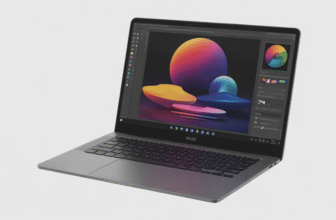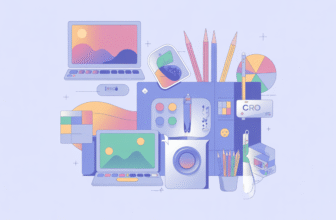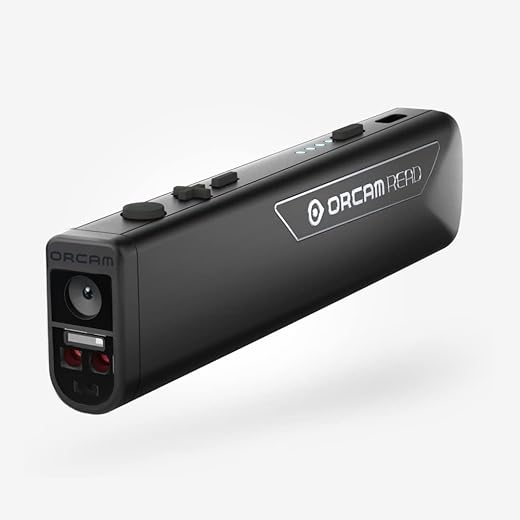
: A Developer’s Deep Dive
In the evolving landscape of digital creativity, the pen tool has regained prominence-not simply as a metaphor but as a precise, tangible instrument enabling artists and engineers to digitize their ideas wiht unprecedented fidelity. This extensive analysis explores the best stylus pens tailored for smooth and accurate digital drawing, crafted for developers, researchers, and tech innovators seeking to understand the underlying engineering, user experience design, and choice criteria that elevate a stylus from a mere accessory to a productivity catalyst.
Understanding Stylus Technology Fundamentals
How Stylus Pens Detect Input: Technologies Compared
Digital stylus pens primarily rely on three technologies: capacitive sensing,electromagnetic resonance (EMR),and active digitizer tech. Capacitive styluses mimic finger touch, offering limited pressure sensitivity and low latency, generally insufficient for fine art or detailed engineering sketching.EMR-based pens, such as those used by Wacom devices, operate without a battery by harnessing electromagnetic fields emitted by the tablet, resulting in excellent pressure sensitivity and precision. Active digitizer pens, exemplified in Apple Pencil or Microsoft Surface Pen, combine capacitive touch with integrated sensors and Bluetooth connectivity for advanced features like tilt detection, palm rejection, and customizable shortcuts. Understanding these technical underpinnings is essential for selecting a stylus optimized for smooth, accurate digital drawing workflows.
Pressure sensitivity and Tilt Recognition: Performance KPIs
Pressure sensitivity, measured in levels (e.g., 1024, 2048, 4096), dictates how finely a stylus can detect pen pressure, translating to line thickness, opacity, or brush size. tilt recognition complements this by capturing the angle of the stylus relative to the drawing surface, enabling shading or calligraphic effects. Together, these metrics form crucial KPIs that developers and artists use to benchmark and compare stylus performance. Higher resolution sensing enables more precise control, reducing input jitter and lag, which results in smoother strokes and a more natural drawing experience.
The Role of Sampling Rate and Latency in Stylus Responsiveness
Sampling rate (commonly 100 Hz and above) is the frequency at which the device reads the stylus input. Higher sampling rates substantially reduce perceived lag and jitter, essential for smooth hand-drawing motions, especially in fast sketching. Latency becomes critically apparent in real-time drawing usage; latencies above 40 ms can cause frustrating visual delays between pen movement and on-screen response. The integration of faster processors and optimized firmware in stylus and tablet hardware leads to reduced latency values, contributing to a seamless user experience.
Analyzing the Top Stylus Pens for Digital Drawing Accuracy
Apple Pencil (2nd generation)
The Apple Pencil 2 excels through its tight integration with iPad Pro’s ProMotion display. With 4096 levels of pressure sensitivity and high tilt detection fidelity, it delivers industry-leading accuracy and smoothness. Its ultra-low latency (~9 ms) combined with precision nibs and seamless palm rejection makes it ideal for professionals ranging from artists to note-takers. Plus, its magnetic charging and tap gesture customization enhance workflow efficiency.
Wacom Pro Pen 3D
Leveraging electromagnetic resonance technology, wacom remains the gold standard for professional illustrators and engineers. The Pro Pen 3D supports 8192 pressure levels and ±60 degrees tilt, with virtually no latency thanks to its hardware tracking capabilities independent of batteries. Wacom’s proprietary drivers and tablet surfaces contribute to its unmatched accuracy, making the pen indispensable in CAD, 3D modeling, and high-end digital art.
Microsoft Surface Slim Pen 2
Designed for Surface devices,the Slim Pen 2 combines an impressive 4096 pressure levels with haptic feedback,delivering a realistic pen-on-paper sensation. Its latency performance rivals that of Apple Pencil, and the pen supports tilt functionality and advanced palm rejection. With Bluetooth Low Energy support, it integrates customizable shortcuts enhancing productivity in design and engineering tools native to Windows 11.
Material Science and Nib Engineering: The Unsung Heroes of Stylus Accuracy
Nib Tip Hardness and Texture Impacts drawing Dynamics
The stylus tip not only touches the screen but mediates friction and tactile feedback between hand and glass. Softer tips generate more resistance, helping stabilize hand movement, reducing jitter commonly encountered on glass screens. Harder tips, conversely, offer quicker movement but risk less smoothness. manufacturers employ innovative materials, such as elastomer, conductive rubber, or precision-engineered plastic, to calibrate tip hardness tailored for specific drawing styles and user preferences.
Swap-Ability and Custom Nibs in Professional Styluses
Many high-end stylus pens allow nib replacement and offer multiple tip shapes including felt, brush, or fine points. This adaptability allows creators to customize stylus feel for their workflow, an frequently enough overlooked factor in sustained accuracy. For engineers who rely on crisp, precise input for wiring diagrams or UI wireframes, fine pointed nibs provide the sharpness needed, while illustrators may prefer softer, brush-like tips for shading nuance.
Operating System and Software Synergy with Stylus Capabilities
Driver and API Support: Enabling the Full Stylus Feature Set
Stylus accuracy and smoothness are also software-dependent. Drivers interacting between stylus hardware and OS dictate how pressure, tilt, and other input signals translate into API calls within creative apps. Platforms like Windows provide advanced Pen APIs for pressure and tilt, while iPadOS uses PencilKit and Metal frameworks to optimize rendering based on stylus data.Software updates frequently enhance responsiveness and introduce new gesture controls.
Popular Drawing Software and Stylus Optimization
Leading digital art suites like Adobe Photoshop, Autodesk Sketchbook, and Clip Studio Paint have deeply integrated stylus support. They employ smoothing algorithms to reduce jitter, dynamically adjust brush parameters based on stylus pressure, and support tilt for natural shading effects. Choosing a stylus compatible with your primary software ecosystem dramatically improves accuracy and reduces the learning curve.
Ergonomics and form Factor: Sustaining Precision Over Long Sessions
Grip Design Influencing Control and Fatigue
Stylus pens designed with balanced weight distribution and ergonomic grips reduce muscle fatigue, maintaining controlled strokes over extended drawing sessions. Hexagonal and triangular barrels prevent rolling, while textured rubber grips improve finger positioning for precision. developers of stylus hardware now employ anthropometric data to fine-tune designs for the professional market, improving overall performance for demanding tasks.
Stylus Weight and Length Trade-offs
A heavier pen can stabilize shaky hands, but risks faster fatigue, while lightweight pens enable agility but may sacrifice subtle control. Similarly, length affects wrist posture and pen angle handling. Ideal styluses strike a balance conducive to fine detail work and dynamic fast sketching alike. Some models allow modular weight adjustment to suit user preferences.
Wireless Protocols and Power Management in Stylus Pens
Bluetooth LE vs Proprietary RF: Latency and Reliability
Modern active stylus pens typically use Bluetooth Low Energy (BLE) to pair with host devices, delivering low power consumption crucial for all-day usage. However, BLE can introduce latency if not optimized-some manufacturers opt for proprietary RF solutions to minimize lag and packet loss. Understanding these trade-offs is vital for developers building custom drawing hardware or integrating third-party stylus solutions into tablets or laptops.
Battery Life and Fast Charging Considerations
Battery capacity and charging mechanisms impact continuous usage and convenience. Styluses such as the Apple Pencil 2 support wireless magnetic charging with up to 12 hours per charge, while others use USB-C fast charging or replaceable AAAA batteries. Battery depletion not only disrupts workflow but can degrade input accuracy as power wanes. Intelligent power management firmware mitigates this risk by alerting users before critical power drop.
Latency Optimization: Firmware, Display, and Sensor Fusion
Sensor Fusion Techniques to Reduce Input Delay
Advanced styluses use sensor fusion algorithms that combine accelerometer, gyroscope, and magnetic field data to predict pen movement trajectories and compensate for communication latency.This prediction enables smoother on-screen rendering by preemptively adjusting stroke paths, creating a near real-time drawing experience even on devices with slower refresh rates. These techniques are an increasing trend in the latest stylus firmware updates.
Impact of Display Refresh Rate and Sampling Harmonization
Stylus responsiveness is intrinsically linked to the display panel’s refresh rate and touch sampling frequency. High refresh rate screens (120 Hz or higher) paired with styluses sampling at similar or higher rates prevent visual tearing and input delay. Devices like iPad Pro’s ProMotion screen exemplify how these hardware synergies deliver the smoothest drawing experiences in the market.
Common Pitfalls in Stylus Usage and How to Avoid Them
Calibration and Drift Issues
Stylus pens sometimes suffer calibration drift, causing misalignment between the pen tip and cursor. This misalignment can distort precision tasks. Regular calibration through OS or app settings, and firmware updates, reduce drift. Users should avoid environmental magnetic interference, which can exacerbate sensor errors, especially for EMR styluses.
Screen Protector Interference
Applying thick or incompatible screen protectors may introduce additional latency and reduce stylus accuracy. Some brands offer micro-textured screen protectors designed specifically for stylus use, enhancing tactile friction without sacrificing sensor performance. Users should verify protectors’ compatibility with active styluses before purchase.
Industry Trends Shaping future Stylus Development
Integration of AI-powered Prediction and Correction Algorithms
Future stylus pens are set to incorporate AI-based stroke prediction and error correction, improving user experience by anticipating pen movement and dynamically smoothing output. Early research published by OpenAI and NVIDIA explores neural network models for natural real-time sketch refinement, pointing to a future where digital artists benefit from augmented error-tolerant input systems.
modular Styluses: Towards Customizable Hardware Ecosystems
Increasingly, manufacturers are experimenting with modular stylus designs that allow replacement of sensors, nibs, batteries, and even firmware components via open APIs. This adaptability aims to extend device lifespan and tailor tools precisely to individual professionals’ workflows. Open hardware initiatives and developer kits encourage community-driven innovation in stylus design.
Selecting the Right Stylus pen for your Digital Drawing Needs
Evaluating Device Compatibility and Ecosystem Integration
Professionals must prioritize device and OS compatibility when selecting a stylus. Apple Pencil pairs exclusively with certain iPad models, while Wacom’s stylus line supports a broad range of proprietary tablets. Surface Slim Pen 2 integrates deeply with Windows hardware and software. Cross-compatibility often requires third-party adapters, usually leading to sacrificed features or performance.
Assessing Use Case: Artistic vs. Technical Drawing Demands
Artists may prioritize tilt sensitivity,texture simulation,and pressure range to mimic conventional mediums,while engineers and UI designers focus on pinpoint accuracy,low latency,and shortcut buttons for repetitive commands. Stylus choice should be aligned with specific workflow needs and software environments to optimize productivity and comfort.
developer and Investor Opportunities in Stylus Ecosystem Innovation
Opportunities in Firmware Optimization and Open APIs
Developers can leverage increasingly open stylus APIs-such as Microsoft’s Pen API and Apple’s PencilKit-to build custom applications enhancing stylus functionality, including gesture recognition, pressure curve adjustments, and AI-based drawing assistance. Firmware tuning represents a hidden frontier for input quality betterment, ripe for disruptive innovation.
Market Outlook: Growth Drivers and Emerging Niches
The stylus market is poised for expansion as hybrid work and remote creative environments grow. Demand for precision tools in education technology, VR/AR design, and IoT edge devices creates new verticals. Investors should watch modular hardware startups and AI-enhanced input systems, which promise to remake traditional pen-and-paper workflows with profound efficiency gains.






